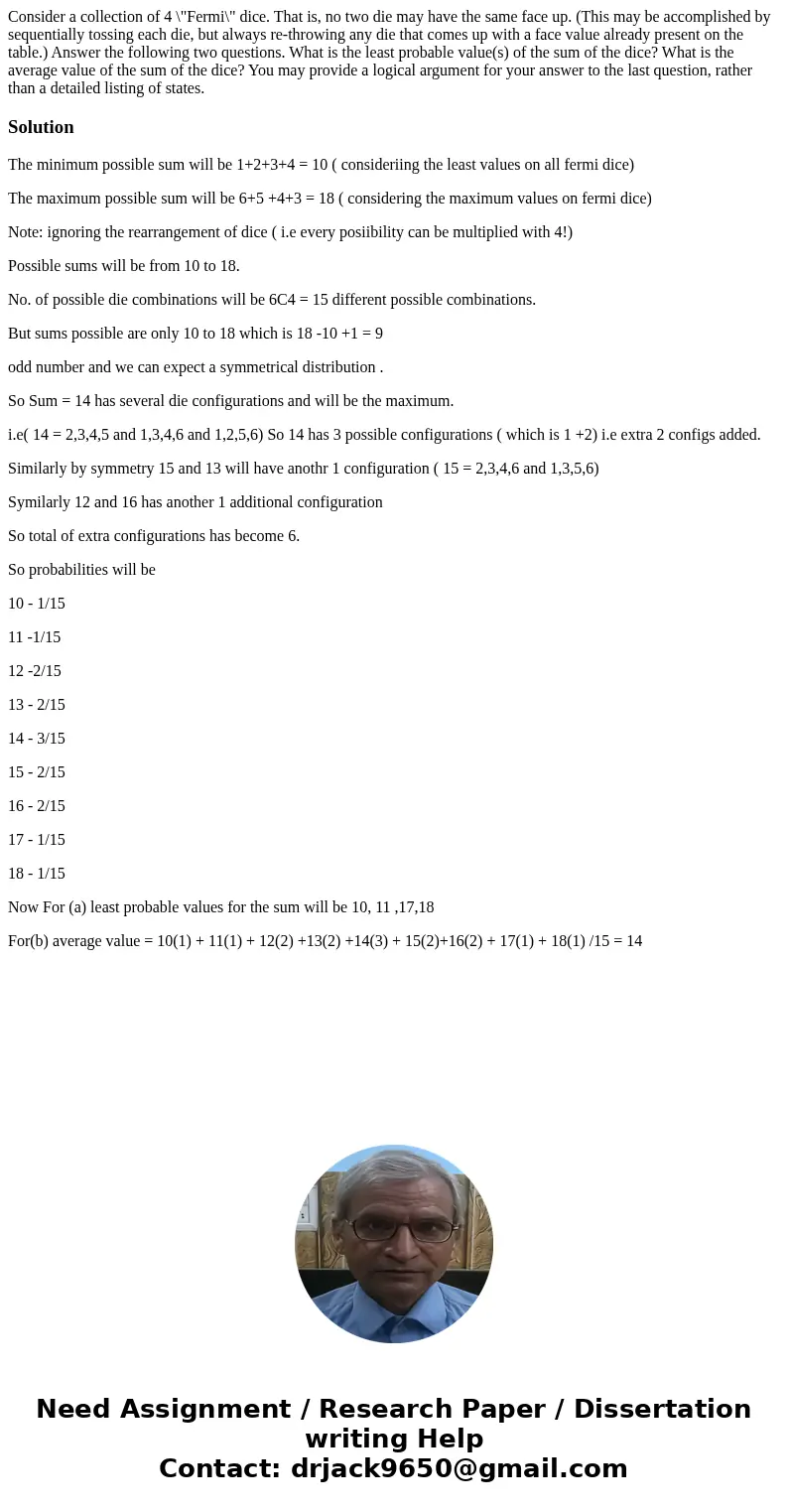Consider a collection of 4 Fermi dice That is no two die may
Solution
The minimum possible sum will be 1+2+3+4 = 10 ( consideriing the least values on all fermi dice)
The maximum possible sum will be 6+5 +4+3 = 18 ( considering the maximum values on fermi dice)
Note: ignoring the rearrangement of dice ( i.e every posiibility can be multiplied with 4!)
Possible sums will be from 10 to 18.
No. of possible die combinations will be 6C4 = 15 different possible combinations.
But sums possible are only 10 to 18 which is 18 -10 +1 = 9
odd number and we can expect a symmetrical distribution .
So Sum = 14 has several die configurations and will be the maximum.
i.e( 14 = 2,3,4,5 and 1,3,4,6 and 1,2,5,6) So 14 has 3 possible configurations ( which is 1 +2) i.e extra 2 configs added.
Similarly by symmetry 15 and 13 will have anothr 1 configuration ( 15 = 2,3,4,6 and 1,3,5,6)
Symilarly 12 and 16 has another 1 additional configuration
So total of extra configurations has become 6.
So probabilities will be
10 - 1/15
11 -1/15
12 -2/15
13 - 2/15
14 - 3/15
15 - 2/15
16 - 2/15
17 - 1/15
18 - 1/15
Now For (a) least probable values for the sum will be 10, 11 ,17,18
For(b) average value = 10(1) + 11(1) + 12(2) +13(2) +14(3) + 15(2)+16(2) + 17(1) + 18(1) /15 = 14

 Homework Sourse
Homework Sourse